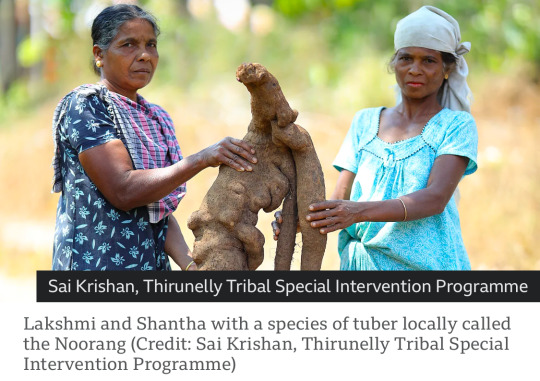#Animal Feed Supplement Manufacturers in india
Explore tagged Tumblr posts
Text
A Comprehensive Guide to Sourcing Animal Feed in India: From Manufacturers to Suppliers
Sourcing quality animal feed is crucial for the health and productivity of livestock. In India, the animal feed industry has seen significant growth, offering a wide range of products to meet the diverse needs of farmers and livestock owners. This guide provides an overview of how to find the best feed manufacture from India, including manufacturers and suppliers, ensuring that you make informed decisions for your livestock's well-being.

Understanding the Types of Animal Feed Available in India
India's animal feed industry offers various products tailored to different types of livestock. The primary categories include:
Compound Feed: A balanced mix of raw materials providing essential nutrients for livestock.
Feed Supplements: These are vital for enhancing the nutritional intake of animals, addressing specific deficiencies. Leading animal feed supplement manufacturers in India offer products like vitamins, minerals, and herbal supplements that play a critical role in improving livestock health.
Organic and Specialty Feeds: With the growing demand for organic products, many animal feed manufacturers in India have started offering organic and specialty feeds that cater to specific needs like high-protein diets or grain-free options.
Key Considerations When Sourcing Animal Feed
When sourcing animal feed, consider the following factors to ensure you choose the best products:
Quality Standards: Always source from certified animal feed manufacturers in India who adhere to strict quality standards. Look for certifications like ISO, GMP, and FSSAI.
Nutritional Content: The feed should meet the specific nutritional needs of your livestock, whether for growth, milk production, or overall health.
Cost-Effectiveness: Balance the quality and cost to ensure you get the best value without compromising on your livestock's health.
Packaging and Shelf Life: Proper packaging ensures the feed remains fresh and free from contamination.
Top Animal Feed Manufacturers in India
India is home to several leading animal feed manufacturers, offering a wide range of products. These companies are known for their high-quality standards and extensive distribution networks:
Eurosun Global: Known for its innovative and high-quality animal feed products.
Emerging Players: Besides established names, emerging players are also making a mark with their specialized offerings, catering to niche markets across India.
Finding Reliable Animal Feed Suppliers in India
Sourcing from trustworthy animal feed suppliers in India is essential for ensuring a consistent and quality supply of feed. Here are some tips to find the best suppliers:
Use Supplier Directories: Online directories and industry platforms list verified animal feed suppliers in India, making it easier to find reputable sources.
Evaluate Supplier Reputation: Check reviews and ratings to gauge the reliability of suppliers.
Assess Supply Chain Efficiency: Ensure that the supplier has a robust distribution network to meet your demand consistently.
The Role of Animal Feed Supplement Manufacturers
Supplements play a crucial role in livestock nutrition by providing essential nutrients that may be lacking in regular feed. Animal feed supplement manufacturers in India offer a variety of products designed to boost animal health, including:
Vitamins and Minerals: Essential for maintaining overall health and preventing deficiencies.
Probiotics and Prebiotics: These supplements help improve digestion and boost immunity.
Herbal Supplements: An emerging trend, offering natural alternatives for enhancing livestock health.
Conclusion
In conclusion, sourcing high-quality animal feed in India requires careful consideration of various factors, including the type of feed, quality standards, and the reputation of manufacturers and suppliers. Whether you're looking for compound feed or specialized supplements, partnering with reliable feed manufacture from India is crucial for the well-being of your livestock. By choosing products from top animal feed manufacturers in India and verified animal feed suppliers in India, you can ensure that your animals receive the best possible nutrition, leading to improved productivity and health.
#feed manufacture from india#animal feed supplement manufacturers in india#animal feed manufacturers in india#animal feed suppliers in india
0 notes
Text

Animal Feed Supplement Manufacturers In India
Animal Feed Supplement is a product that is added to the basic feed ration of animals to improve their overall health, performance, or specific dietary requirements. Nualter Herbovet is the leading animal feed supplement manufacturers in India that is specialised in producing a wide range of supplements for various livestock and pet nutrition needs. Our products are formulated using premium ingredients and adhere to stringent quality standards. We are dedicated to formulate supplements that enhance animal health, growth, and productivity. We hold numerous certifications like ISO, GMP, and WHO GMP and follow all the rules and regulations and aim for the highest standards.
#Animal Feed Supplement Manufacturers In India#Best Animal Feed Supplement Manufacturers In India#Top Animal Feed Supplement Manufacturers In India#Animal Feed Supplement Manufacturers#Best Animal Feed Supplement Manufacturers#Top Animal Feed Supplement Manufacturers
0 notes
Text
Elevate Animal Nutrition: Top Animal Feed Supplement Manufacturers
The general health and welfare of both cattle and pets depend on improving animal nutrition. When searching for the top producers of animal feed supplements, Heilsaa Care stands out as a dependable and trustworthy supplier that places a premium on quality and innovation. They are essential in the formulation and production of premium supplements that improve animal nutrition.

Read more: https://heilsaacare.blogspot.com/2023/07/elevate-animal-nutrition-top-animal.html
#Animal Feed Supplement Manufacturers#Animal Feed Supplement Manufacturers in india#Best Animal Feed Supplement Manufacturers#Top Animal Feed Supplement Manufacturers in India
0 notes
Text
India is one of the largest markets for veterinary pharmaceuticals and products, owing to its robust agriculture and livestock sectors. The veterinary product manufacturing industry plays a vital role in improving animal health, productivity, and overall welfare. With a variety of veterinary medicines, supplements, and healthcare products, these veterinary product manufacturers contribute significantly to both domestic and international markets. In this comprehensive guide, we explore the top veterinary product manufacturers in India, their offerings, and frequently asked questions to help you understand this thriving industry.
#vetnation pharma#top veterinary product manufacturers in india#india's leading veterinary product manufacturers#veterinary pharmaceuticals#top 10 veterinary products manufacturers in india#veterinary pcd pharma franchise business model#high quality veterinary medicines and products#best veterinary product manufacturers in india#animal healthcare#animal feed supplements#top manufacturers of veterinary products
0 notes
Text
Dandelion News - December 1-7
Like these weekly compilations? Tip me at $kaybarr1735 or check out my Dandelion Doodles for 50% off this month!
1. These high-tech windows fight climate change – and will save you money

“[“Vacuum-insulated glass”] insulates five times better than double-paned glass. The Enthermal product line holds energy about as well as fiberglass wall insulation[…. T]he energy bill savings offset the upfront cost of the upgrade in two to seven years, depending on the building[….]”
2. Doulas test ways to curb Memphis’ Black maternal, infant deaths

“Research shows they are key to better health outcomes. […] Free of charge, [parents enrolled in this pilot program], in addition to being paired with a doula, get access to free yoga classes, diapers, breastfeeding starter kits, nutritious food and other tangible help that can measurably boost well-being.”
3. Scientists find feeding grazing cattle seaweed cuts methane emissions by almost 40%

“This is the first study to test seaweed on grazing beef cattle in the world. […] Most research to reduce methane emissions using feed additives has taken place in controlled environments with daily supplements. But Kebreab noted in the study that fewer than half of those methods are effective for grazing cattle.”
4. Success for local residents as Florida council toppled over sewage plant plan

“A citizens’ revolt in a small Florida city ousted an entire slate of councilors who were pushing for a new sewage plant to be built close to one of the state’s most pristine and treasured rivers.”
5. Beaver survey aims to show the urban benefits of Chicago's 'ecosystem engineers'

“Urban Rivers is installing [“artificial floating gardens”] along the river to restore native wetland habitats, which provide food and shelter for wildlife, as well as natural spaces for humans.”
6. The future of plastic: Biodegradable, durable, and even edible

“[… T]he composite plastic proved not only sturdy but also more malleable than its core component, hydroxyethyl cellulose. Additionally, since both cellulose and tyrosine are edible, the biodegradable composite plastic can technically be consumed.”
7. Limestone quarries could be vital for wild bee conservation

“Quarries provide valuable habitats for wild bees and other animals and plants that occur on the now rare calcareous grasslands," explains lead author Dr. Felix Kirsch[….]”
8. New England wedding vendors offer help to same-sex couples before Trump inauguration

“Marriage equality isn’t immediately at risk. Trump has said he considers it settled law, but of course it’s hard to take him at his word […] so vendors in the region are offering free or discounted services to queer couples and noncitizens in a rush to marry.”
9. The indigenous women saving India's endangered giant yams

“Since their formation in 2022, the 10 members of the Noorang group have planted and brought back to the community 180 varieties of wild tubers[….] The project is part of [… a] farming initiative to eradicate poverty, provide agricultural training and empower women in vulnerable tribal communities.”
10. The US is making and deploying more solar panels than ever before

“[… D]omestic solar module manufacturing capacity has nearly quintupled since 2022[….] Solar is the cheapest source of new power generation by far, and it’s an increasingly large employer in the U.S., particularly in Republican-led states.”
November 22-28 news here | (all credit for images and written material can be found at the source linked; I don’t claim credit for anything but curating.)
#hopepunk#good news#solar panels#solar energy#solar power#climate change#co2 emissions#cattle#seaweed#india#yams#food insecurity#beaver#habitat#conservation#bees#florida#civic engagement#new england#same sex marriage#gay marriage#marriage#us politics#plastic#science#home improvement#thermal insulation#parenting#perinatal#medicine
65 notes
·
View notes
Text
Feed Electrolytes Market Size, Trends, and Growth Forecast to 2025
Market Overview
The feed electrolytes market is experiencing steady growth, driven by the increasing demand for livestock nutrition solutions that enhance animal health, growth, and productivity. Electrolytes such as sodium (Na), potassium (K), chloride (Cl), calcium (Ca), magnesium (Mg), and phosphorus (P) play a crucial role in maintaining fluid balance, preventing dehydration, and improving metabolic functions in livestock.
Farmers and feed manufacturers are increasingly incorporating electrolyte supplements into animal diets to boost performance, enhance immunity, and reduce stress caused by environmental factors, disease, or transportation. The market is witnessing strong demand across poultry, cattle, swine, aquaculture, and pet nutrition sectors.
Get free sample copy @ https://www.statsandresearch.com/request-sample/25586-global-feed-electrolytes-market
Market Insights
Market Growth Drivers
Increasing Livestock Production: The rising global demand for meat, milk, and eggs is driving the need for electrolyte-enriched animal feed.
Rising Heat Stress & Dehydration Concerns: Climate change and extreme weather conditions increase livestock dehydration risks, boosting electrolyte supplementation.
Growing Focus on Animal Health & Performance: Feed electrolytes enhance metabolism, muscle function, and immune response, improving overall livestock productivity.
Expanding Poultry & Dairy Sectors: Poultry and dairy farming account for a significant share of electrolyte feed usage.
Technological Advancements in Animal Nutrition: Innovations in water-soluble electrolytes and customized feed formulations are driving adoption.
Market Challenges
High Costs of Feed Supplements: Small-scale farmers may find electrolyte-enriched feed expensive.
Lack of Awareness Among Farmers: In some developing regions, limited knowledge about electrolyte benefits hinders adoption.
Regulatory Restrictions on Feed Additives: Stricter regulations on feed additives and supplement formulations may impact market growth.
Fluctuating Raw Material Prices: The availability and cost of electrolyte compounds (such as sodium bicarbonate and potassium chloride) affect pricing.
Get full report @ https://www.statsandresearch.com/report/25586-global-feed-electrolytes-market/
Key Players in the Feed Electrolytes Market
Several companies lead the feed electrolyte industry, focusing on animal nutrition solutions and customized electrolyte formulations. Key players include:
Cargill, Inc. (USA) – A global leader in animal nutrition and feed additives.
Archer Daniels Midland (ADM) (USA) – Offers specialized electrolyte feed formulations.
BASF SE (Germany) – Provides mineral-based electrolyte supplements for livestock.
DSM Nutritional Products (Netherlands) – Develops feed solutions to enhance livestock immunity and hydration.
Nutreco N.V. (Netherlands) – Focuses on sustainable and performance-enhancing feed electrolytes.
Kemin Industries (USA) – A key provider of heat-stress management supplements for livestock.
Alltech Inc. (USA) – Innovates in organic and mineral-based feed electrolytes.
Pancosma (ADM Group, Switzerland) – Specializes in electrolyte blends for poultry and dairy.
Regional Analysis
1. North America
United States & Canada: Strong demand for feed electrolytes in poultry, dairy, and beef cattle industries.
Heat stress management solutions are widely adopted.
Leading presence of major feed supplement manufacturers.
2. Europe
Germany, France, UK, and the Netherlands: High adoption of precision livestock farming and nutritional supplements.
Strict EU regulations on feed additives influence market dynamics.
Increasing focus on sustainable and organic animal nutrition.
3. Asia-Pacific
China and India: Rapidly growing dairy, poultry, and aquaculture industries fuel demand.
Australia: High electrolyte adoption in beef and sheep farming.
Rising consumer awareness about high-quality animal protein production.
4. Latin America
Brazil and Argentina: Increasing livestock exports drive electrolyte supplement demand.
Expanding poultry and cattle farming sectors.
Challenges include cost-sensitive markets and supply chain limitations.
5. Middle East & Africa
South Africa & Gulf Countries: Growing dairy and poultry industries.
Hot climate conditions drive demand for electrolytes to prevent heat stress.
Limited access to advanced feed solutions in some African regions.
Get enquiry before buying @ https://www.statsandresearch.com/enquire-before/25586-global-feed-electrolytes-market
0 notes
Text
What is Macwell Pharma and What Does It Do?
Macwell Pharma is one of India’s leading companies in the field of veterinary feed supplements and animal health solutions. With a commitment to providing high-quality, scientifically formulated products, Macwell Pharma plays a crucial role in enhancing livestock health, improving milk production, and ensuring overall animal well-being.
What Does Macwell Pharma Do?
Macwell Pharma specializes in the research, development, and manufacturing of premium veterinary feed supplements designed to boost immunity, strengthen bones, and enhance milk yield in dairy animals. Our products are carefully formulated to meet the nutritional requirements of cattle, buffaloes, and other livestock.
Our Key Areas of Work:
1. High-Quality Feed Supplements
We provide a range of scientifically developed feed supplements such as:
Vitto-H – Energy booster for better stamina and strength.
Vitto-Forte – Enhances bone strength and milk production.
Lacto-Milk – Improves milk yield and quality in dairy animals.
2. Enhancing Livestock Health
Macwell Pharma ensures that livestock receive essential vitamins, minerals, and nutrients that keep them disease-free and productive.
3. Supporting Farmers and Dairy Industry
We work closely with dairy farmers and veterinarians, providing guidance on nutrition management and best practices for animal health.
Why Choose Macwell Pharma?
✅ Scientifically formulated products ✅ Proven results in milk production and animal strength ✅ Trusted by thousands of dairy farmers across India ✅ Available in local markets and online
Conclusion
Macwell Pharma is dedicated to transforming the animal healthcare industry with innovative and effective feed supplements. Our mission is to support farmers, improve livestock productivity, and contribute to the dairy industry’s growth in India.
📞 For more details or to buy our products, contact us at: 8340092400 🛒 Find us in local stores or order online via our bio link!
1 note
·
View note
Text
L-Histidine Market Size, Growth Outlook 2035
The L-Histidine market industry size is projected to grow from USD 0.79 Billion in 2024 to USD 1.65 billion by 2032, exhibiting a compound annual growth rate (CAGR) of 8.6% during the forecast period (2024 - 2032).
L- Executive Summary
Histidine, an essential amino acid involved in various biological functions, is increasingly gaining attention in the food, pharmaceutical, and nutritional supplement industries. The L-Histidine market is expected to grow due to its rising application in treating metabolic disorders, improving immune function, and its use in the production of histamine for medical purposes. As awareness of its health benefits increases, the demand for L-Histidine in various sectors is likely to rise significantly.
Market Overview
L-Histidine is an amino acid that plays a crucial role in the production of haemoglobin and in the metabolism of various nutrients. It is mainly used in the production of food additives, pharmaceuticals, and supplements, as well as in therapeutic treatments The L-Histidine Market Size was valued at USD 0.71 billion in 2023. The L-Histidine market industry size is projected to grow from USD 0.79 Billion in 2024 to USD 1.65 billion by 2032, exhibiting a compound annual growth rate (CAGR) of 8.6% during the forecast period (2024 - 2032). This growth is driven by increasing consumer interest in functional foods, growing investments in healthcare, and the rise of metabolic health awareness.
Market Drivers
Rising Demand for Nutritional Supplements: L-Histidine is used in various supplements, particularly for improving immune function, reducing inflammation, and managing metabolic disorders, driving demand in the nutraceuticals market.
Growing Applications in Pharmaceuticals: The pharmaceutical industry uses L-Histidine in drug formulations and treatments for various metabolic disorders, including anemia and kidney disease.
Awareness of Health Benefits: Increasing awareness of the importance of essential amino acids for overall health and wellness, particularly in athletes and the aging population, is driving growth in the L-Histidine market.
Market Restraints
Limited Raw Material Availability: The production of L-Histidine from natural sources may face supply chain challenges due to the limited availability of raw materials, affecting production capacity and cost.
Regulatory Challenges: The use of L-Histidine in food products and supplements is subject to stringent regulations, which may limit its adoption in certain markets.
Price Volatility: The price of L-Histidine can fluctuate due to market conditions and supply chain disruptions, affecting its affordability for manufacturers and consumers.
Regional Analysis
North America: North America dominates the L-Histidine market, driven by the high demand for health supplements, increasing investments in pharmaceutical research, and the region’s strong healthcare infrastructure.
Europe: Europe is witnessing steady growth, with countries like Germany and the UK focusing on research related to amino acid-based supplements and their health benefits.
Asia-Pacific: The Asia-Pacific market is growing rapidly due to rising consumer interest in health and wellness products, increasing awareness of amino acid supplementation, and the expanding pharmaceutical industry in countries like China and India.
Segmental Analysis
By Product Type:
Powdered L-Histidine
Liquid L-Histidine
L-Histidine Hydrochloride
By Application:
Nutritional Supplements
Food & Beverages
Pharmaceuticals
Animal Feed
Cosmetics and Personal Care
By End-User:
Pharmaceutical Companies
Nutraceutical Manufacturers
Food and Beverage Manufacturers
Animal Feed Producers
Key Market Players
Angene Chemicals (UK)
Douglas Laboratories (US)
Zealing Chemical Co. Ltd (Thailand)
MolPort,
ABI Chemical
Acron Pharma Tech
Shine Star Biological Engineering
Recent Developments
Strategic Partnerships: Companies like Evonik Industries have entered strategic partnerships with nutraceutical companies to expand their L-Histidine offerings and cater to the growing demand in the health supplement sector.
Product Innovation: Manufacturers are investing in research and development to create enhanced L-Histidine formulations that offer better bioavailability and increased efficacy in health products.
Market Expansion: Several companies have expanded their production capabilities to meet the growing demand for L-Histidine, particularly in the Asian market, where the use of amino acids in food and supplements is gaining popularity.
For more information, please visit @marketresearchfuture
#L-Histidine Market Size#L-Histidine Market Share#L-Histidine Market Growth#L-Histidine Market Analysis#L-Histidine Market Trends#L-Histidine Market Forecast#L-Histidine Market Segments
0 notes
Text
Custom Supplement Formulation Services & Sweetener Solutions: India’s Leading Suppliers

The health and wellness industry is growing rapidly, and with it, the demand for high-quality supplements and natural sweeteners is on the rise. India has emerged as a leading hub for custom supplement formulation services, low-calorie sweetener manufacturing, and specialized ingredient supply for various food and beverage applications. Whether you need customized nutritional supplements, natural Sweetners for Yoghurt Supplier from india, or high-protein shrimp meal for animal feed, India offers a range of solutions tailored to your needs.
Custom Supplement Formulation Services
With consumers becoming increasingly health-conscious, businesses are looking for Custom Supplement Formulation Services that cater to specific dietary and functional needs. Indian manufacturers specialize in developing customized vitamins, minerals, herbal extracts, and functional blends tailored to client requirements. These services include:
Ingredient sourcing: Ensuring high-quality, bioavailable ingredients.
Formulation development: Creating blends that meet regulatory standards and health claims.
Manufacturing and packaging: Offering private label and white-label solutions.
Companies in India have expertise in developingsports nutrition, weight management supplements, herbal formulations, and dietary supplements using advanced research and technology.
Low-Calorie Sweetener Manufacturer in India
The global shift towardshealthier, sugar-free products has increased the demand for Low-calorie Sweetener Manufacturer. India is home to some of the best manufacturers producing natural and artificial sweeteners for food and beverage applications. Popular sweeteners include:
Stevia Extracts: A natural, plant-based sweetener with zero calories.
Erythritol & Xylitol: Sugar alcohols used in keto and diabetic-friendly products.
Sucralose & Aspartame: High-intensity artificial sweeteners for reduced-calorie formulations.
These sweeteners are widely used inbeverages, baked goods, confectionery, and dairy products, ensuring great taste with fewer calories.
Sweeteners for Yoghurt Supplier from India
Yoghurt manufacturers require specialized sweeteners to balance taste, texture, and shelf life. Indian suppliers offer high-quality sweeteners tailored for dairy applications, ensuring:
Enhanced flavor without aftertaste
Stable formulation under varying temperatures
Low glycemic index for health-conscious consumers
Common choices include monk fruit extract, stevia, and fructooligosaccharides (FOS), which not only sweeten the yoghurt but also contribute to gut health. With increasing demand for low-sugar and probiotic-rich yoghurts, Indian suppliers provide customized sweetener solutions for both traditional and plant-based dairy products.
Shrimp Meal Manufacturers & Suppliers
Shrimp Meal Manufacturers & Suppliers is ahigh-protein ingredient widely used in aquafeed, poultry feed, and pet food. Indian manufacturers process shrimp waste and whole shrimp to produce nutrient-rich shrimp meal, offering:
High digestibility and protein content
Essential amino acids for animal growth
Sustainable and cost-effective feed solutions
India’s shrimp meal suppliers ensure strict quality control and adhere to global feed safety standards, making them a reliable choice for feed manufacturers worldwide.
Conclusion
India is a key player in the custom supplement formulation, sweetener manufacturing, and shrimp meal production industries. With advanced R&D, regulatory compliance, and sustainable sourcing, Indian manufacturers provide high-quality, customized solutions for businesses worldwide. Whether you are in the nutritional supplement, dairy, or animal feed industry, India’s suppliers offer innovative and cost-effective products tailored to your needs.
0 notes
Text
Enhance Swine Productivity with VINAYAK's Natural Feed Solutions
VINAYAK stands as one of the largest producers of herbal feed supplements in India, delivering high-quality solutions to improve swine health and productivity. Our swine feed supplements are manufactured in internationally certified feed plants, ensuring each product meets stringent quality standards during every stage, from production and packaging to transport. Our commitment to quality extends to intensive testing for product suitability and safety, ensuring that every supplement is safe for both the feed constituents and the animals it supports.
The active phytochemicals in VINAYAK’s swine feed supplements are specially formulated to provide maximum benefits at optimal inclusion levels, resulting in more cost-effective feed solutions for farmers. Our continuous in-vivo and in-vitro testing processes allow us to constantly upgrade product stability, extend the storage period, and ensure ease of administration—either through water or feed.
VINAYAK offers a range of innovative products designed to improve swine productivity and health. Products like Metalean, Pigylac, and PROLIFOS boost overall performance by improving nutrient absorption and metabolism. Our Calsow +N solution ensures balanced nutrition for swine, while our VinMos (Mannan-Oligosaccharide) and Herbofloxin enhance gut health and maintain digestive equilibrium.
We understand the importance of respiratory health and overall immunity, and we offer targeted solutions to address these concerns. Whether it's optimizing productivity, supporting gut health, or improving respiratory function, VINAYAK provides specialized solutions to help farmers achieve better results.
Our holistic approach to swine nutrition is backed by years of research and development, ensuring that our feed supplements meet the unique needs of the modern swine farming industry. By incorporating VINAYAK’s natural feed solutions into your feeding regimen, you can expect improved performance, reduced feed expenses, and healthier livestock.
#SwineFarming#HealthySwine#SwineCare#NaturalFeedSolutions#SwineNutrition#SustainableFarming#PigFarming#HogHealth#GutHealthSupport#FeedEfficiency#ImmuneBoosters#LivestockWellness#PorkProduction#PigGrowth#SwineFeedSupplements#AnimalHealthCare#HerdManagement#SwineInnovation#SustainableLivestock#FarmProductivity
0 notes
Text
Navigating the Innovations in Animal Feed Supplements: Leading Manufacturers in India
In the evolving landscape of animal husbandry, animal feed supplements play a pivotal role in ensuring optimal animal health and productivity. As the demand for high-quality animal products rises, the animal feed manufacturers in India are stepping up with innovative solutions to meet these needs. This blog explores the advancements in animal feed supplements and highlights some of the leading animal feed supplement manufacturers in India.

The Growing Feed Industry in India
India's animal feed industry has seen remarkable growth over the past decade. The sector is driven by increasing demand for animal protein, advancements in animal nutrition, and supportive government policies. As the world's second-largest producer of milk and a significant player in poultry and livestock farming, India’s feed industry is expanding rapidly. This growth is supported by a burgeoning market of feed manufacturers from India who are continually pushing the boundaries of innovation.
Innovations in Feed Supplements
The Indian feed supplement industry is at the forefront of several exciting innovations:
Technological Advancements: Recent developments include advanced formulations that enhance nutrient absorption and efficacy. Technologies such as encapsulation and precision nutrition are becoming increasingly prevalent.
Sustainability Initiatives: Manufacturers are adopting eco-friendly practices, such as using biodegradable packaging and reducing carbon footprints. These initiatives are crucial for meeting the growing consumer demand for sustainable products.
Health and Performance Enhancements: Innovations in feed supplements are focused on boosting animal health and productivity. This includes the development of supplements that support immune function, improve growth rates, and enhance feed conversion ratios.
Challenges and Opportunities
Despite the growth and innovation, the industry faces several challenges:
Regulatory Challenges: Compliance with stringent safety standards and labeling requirements can be complex. Ensuring that products meet regulatory guidelines while maintaining high quality is a constant challenge for animal feed manufacturers in India.
Market Opportunities: There are substantial opportunities in niche markets, such as organic and specialty feed supplements. Additionally, expanding into international markets presents growth potential for animal feed suppliers in India.
Conclusion
The future of animal feed supplements in India looks promising, with ongoing innovations and a dynamic market landscape. As animal feed supplement manufacturers in India continue to push the envelope, the sector is poised for further growth and development. The continued focus on technology, sustainability, and health will be key drivers in shaping the industry’s future.
In summary, navigating the advancements in animal feed supplements reveals a vibrant and evolving industry, marked by significant contributions from leading feed manufacturers from India. The commitment to innovation and quality ensures that the Indian feed industry will remain at the forefront of global animal nutrition.
#feed manufacture from india#animal feed supplement manufacturers in india#animal feed manufacturers in india#animal feed suppliers in india
0 notes
Text
Integration of Herbal Ingredients To Enhance Veterinary Feed Supplements Efficiency

As care-takers in the animal world, we would love to have all of our animals be strong, healthy, and happy. From pet animals, to farm animals, to working animals, all have to be maintained in excellent health. In keeping them fit and strong, it really does pay to consider their diets and supplements as well. Just like how humans take healthy food to stay fit, animals also need the right blend of nutrients in their diet for optimal health and wellness. From the past couple of decades, a lot of methodologies have been uncovered by scientists and animal care experts to advance animal health and wellness, of which one is using herbal ingredients in veterinary feed supplements.
#Veterinary Feed Supplements#Veterinary Feed Supplements in india#animal feed supplements#poultry feed supplement supplier in india#third party manufacturing of ayurvedic products#immunity boosters#pharma pcd franchise
0 notes
Text
Organic Soy Lecithin: A Versatile Ingredient Poised for Growth

Health Benefits of Soy Lecithin Soy lecithin is a natural food additive produced during the processing of soybeans. It contains important nutrients like vitamins, proteins, and amino acids that are beneficial for health. Soy lecithin is a good source of choline, an essential nutrient that helps in liver function, muscle movement, learning, and memory. Choline is necessary for synthesizing acetylcholine, a crucial neurotransmitter. Lecithin also contains phytosterols which help control cholesterol levels. Due to these health properties, soy lecithin is used in many food applications and nutritional supplements. Wide Range of Industrial Applications Organic Soy Lecithin has emulsifying and stabilizing properties which make it suitable for use in many industries. In the food industry, it is used as an additive in baked goods, chocolate, ice cream, margarine, mayonnaise, and others. Soy lecithin helps in mixing together ingredients that do not normally blend like oil and water. It extends the shelf life of processed foods by acting as an antimicrobial agent. Other major application areas of soy lecithin include pharmaceuticals, cosmetics, animal feed, and paints. Many medications contain soy lecithin to improve their absorption in the body. It is a key ingredient in lotions, makeup, and hair conditioners due to its moisturizing properties. Growth in Organic Farming and Regulations Conventional soy lecithin is made from non-organic and genetically modified soybeans which are sprayed with pesticides and chemical fertilizers. However, consumer demand for clean label and organic products is increasing at a rapid pace. As a result, soy lecithin manufacturers are switching to organic and non-GMO sources. This transition allows them to capitalize on premium price points by marketing organic soy lecithin. Stringent regulations in the EU have further accelerated this shift. The regulations discourage use of residues from solvents like hexane in extracting lecithin. Production using food-grade ethanol is becoming the mainstream method. Strict norms are boosting demand for organic variants that use mechanical extraction processes without chemical solvents. North America Dominates Production At present, North America accounts for over 50% of global soy lecithin supply led by the United States. Major manufacturers have large-scale production facilities based in Iowa, Nebraska, and other Midwestern states close to soybean growing regions. However, the market is witnessing new capacity additions in South America particularly in Argentina and Brazil where favorable climatic conditions allow high soybean yields. There is also rising investment interest in soy lecithin projects across Western Europe, Asia Pacific and Africa. Germany, Netherlands, China, and India have emerged as key importers and future growth centers for soy lecithin consumption worldwide. Customization Options Driving Innovation Leading suppliers are investing heavily in R&D to enhance applicability of soy lecithin through custom formulations and product modifications. Options like adjusting phospholipid profile and concentration of nutrients allow tailored solutions for various customer segments. Specialty variants containing high levels of specific fatty acids are used in dietary supplements. Pharmaceutical-grade lecithin meeting stringent purity criteria expands usability. Manufacturers also offer organic certification, non-GMO verification, halal and kosher certifications depending on target markets. Advanced technologies enable extraction of valuable by-products like steryl glucosides and protein fractions. Thus, continuous product development will sustain growth in high-value application segments.
Get more insights on, Organic Soy Lecithin
About Author:
Ravina Pandya, Content Writer, has a strong foothold in the market research industry. She specializes in writing well-researched articles from different industries, including food and beverages, information and technology, healthcare, chemical and materials, etc. (https://www.linkedin.com/in/ravina-pandya-1a3984191)
#Coherent Market Insights#Clean Label Trends#Powder and Granular Lecithin#Unrefined Soy Lecithin#Animal Feed Applications
0 notes
Text
Thiamine Market Dynamics: Key Drivers and Regional Growth Analysis
The global thiamine market size is expected to reach USD 549.9 million by 2030, as per the new report by Grand View Research, Inc. It is expected to expand at a CAGR of 13.9% from 2022 to 2030. The market is majorly driven by the increasing usage of the product in energy metabolism and the development and growth of functional cells. The future growth of the product is dependent on the awareness among people regarding the deficiency of thiamine in the human body. This has resulted in causing problems for the manufacturers to capture the market and the customers. This deficiency in the human body causes short-term memory loss, weight loss, and other mental signs.
Thiamine is also known as Vitamin B1. It is a colorless compound that is soluble in water and insoluble in alcohol. It plays a crucial role in intracellular glucose metabolism and in converting carbohydrates and fats into energy. It is also important in maintaining normal growth and development. In addition, it helps to maintain the proper functioning of the digestive system, the heart, and the nervous system. The global pandemic disrupted every industry due to the increasing demand-supply gap, decreasing production, and supply chain disruption. The automobile, industrial, steel, and tourism industries were the majorly hit industries. On the other hand, the pharmaceutical industry saw a great boom in the market. The impact of COVID-19 on the product market was positive due to its usability in the pharmaceutical industry. It was being viewed as adjunctive therapy for many critically ill patients of COVID-19. Though this requires additional study, it positively impacted the thiamine demand globally.
Thiamine Market Report Highlights
The pharmaceuticals application segment is expected to register the fastest growth rate of 14.3% from 2022 to 2030 in terms of revenue due to its rising usability as an immunity booster and natural growth and development promoter in humans as well as animals
Thiamine is found abundantly in cereal grains and some other seeds. In some countries, wheat flour and white rice are fortified with synthetic thiamine. In animal meat, pork is one of the biggest sources of the product
The product is available in many dietary supplements. Multimineral and multivitamin supplements with thiamine and B-complex vitamins are also available. The most commonly used forms in supplements are thiamine hydrochloride and mononitrate
North America is expected to expand at the fastest growth rate of 14.3% from 2022 to 2030 in terms of revenue. This high rate is due to the increasing use of the product in the food and beverages and pharmaceutical industries in the region
The global market has few players who operate in the market to create their position and capture market as well as customer base. There is a wide scope for new players to enter
Thiamine Market Segmentation
Grand View Research has segmented the global thiamine market on the basis of application and region:
Thiamine Application Outlook (Volume, Tons; Revenue, USD Thousand, 2018 - 2030)
Food and Beverages
Flavors
Others
Animal Feed
Pharmaceuticals
Dietary Supplements
Others
Thiamine Regional Outlook (Volume, Tons; Revenue, USD Thousand, 2018 - 2030)
North America
US
Canada
Mexico
Europe
Germany
UK
France
Italy
Spain
Asia Pacific
China
India
Japan
South Korea
Central & South America
Brazil
Argentina
Middle East & Africa
Saudi Arabia
South Africa
Order a free sample PDF of the Thiamine Market Intelligence Study, published by Grand View Research.
0 notes
Text
Suraj Shree Chemicals is a premier cattle feed manufacturer offering top-quality nutritional supplements for livestock. Our products are specially formulated to meet the dietary needs of cattle, providing essential vitamins and minerals for optimal health and growth. Trust Suraj Shree Chemicals to deliver superior feed solutions for your livestock.
Visit here: https://www.sscl.in/animal-feed.aspx
0 notes
Text
Understanding Calcium Carbonate and Its Wide Applications
What Is Calcium Carbonate?
Calcium carbonate is a naturally occurring compound with the formula CaCO₃. It is present in various forms, such as calcite, aragonite, and vaterite, and appears as a fine, white powder after processing. Known for its non-toxic and environmentally friendly properties, calcium carbonate plays a significant role in several industries.
Why Choose Airotech Minerals?
When it comes to sourcing calcium carbonate, quality is of utmost importance. Airotech Minerals has established itself as a leader in the industry, known for its exceptional standards and customer-oriented approach. The company offers:
Premium Quality: Their calcium carbonate is processed to meet high purity standards.
Tailored Solutions: Products are available in variouIn agriculture, calcium carbonate serves as a soil conditioner to balanCalcium carbonate is a natural mineral with numerous uses across various industries. Found in materials like limestone, marble, and chalk, it is valued for its chemical stability, whiteness, and ability to neutralize acids. Its applications range from construction and healthcare to manufacturing and agriculture, making it one of the most versatile minerals in existence.
For businesses seeking a reliable supplier, Airotech Minerals is a trusted name. Recognized as one of the leading Calcium Carbonate Manufacturers in India, the company offers products of exceptional quality tailored to diverse industrial needs.
Key Characteristics of Calcium Carbonate
Chemical Neutrality: Its inert nature ensures it is safe for applications in food, medicine, and other sensitive areas.
High Brightness: This mineral enhances the visual appeal and quality of products in paper, paints, and other sectors.
Absorbent Properties: It effectively absorbs moisture, making it valuable in agriculture and industrial production.
Affordability: Being abundant in nature, calcium carbonate is both cost-effective and efficient.

Common Uses of Calcium Carbonate
1. Construction Sector
In construction, calcium carbonate is a core component of cement, lime, and concrete. It strengthens these materials, making them suitable for infrastructure projects such as buildings and roads. Additionally, calcium carbonate is used in creating marble and other decorative materials that add elegance to architectural designs.
2. Plastics and Polymers
The plastic industry uses calcium carbonate as a filler to improve the strength and durability of plastic products. It reduces production costs and enhances product quality, making it a popular choice in the industry.
3. Paper Manufacturing
Calcium carbonate is a vital material in the production of paper, where it improves brightness, smoothness, and opacity. These properties enhance the printing quality and durability of paper products, making them more appealing.
4. Agricultural Applications
ce pH levels and enrich the soil. It is also added to animal feed to support the healthy growth of livestock by providing essential nutrients.
5. Healthcare and Pharmaceuticals
In the healthcare industry, calcium carbonate is an ingredient in antacids and dietary supplements. It helps neutralize stomach acid and provides essential calcium, which is vital for healthy bones and teeth.
6. Paints and Coatings
This mineral acts as an extender in paints, enhancing their smoothness and opacity. Its inclusion improves the quality and cost-effectiveness of paints and coatings without compromising their performance.
7. Environmental Solutions
Calcium carbonate is used in water treatment and pollution control. It helps purify water and neutralize harmful emissions in industrial processes, contributing to a cleaner and greener environment.
s grades and particle sizes to match specific industrial requirements.
Eco-Friendly Practices: Sustainable methods are prioritized to reduce environmental impact.
With Airotech Minerals, businesses gain a trusted partner dedicated to delivering high-performance products.
Final Thoughts
Calcium carbonate is a versatile mineral that supports industries such as construction, agriculture, and healthcare. Its affordability and beneficial properties make it an essential component in many products and processes.
For businesses in need of high-quality calcium carbonate, Airotech Minerals stands out as a top choice among Calcium Carbonate Manufacturers in India. Their commitment to quality, innovation, and sustainability ensures that clients receive reliable and efficient solutions tailored to their needs.
0 notes